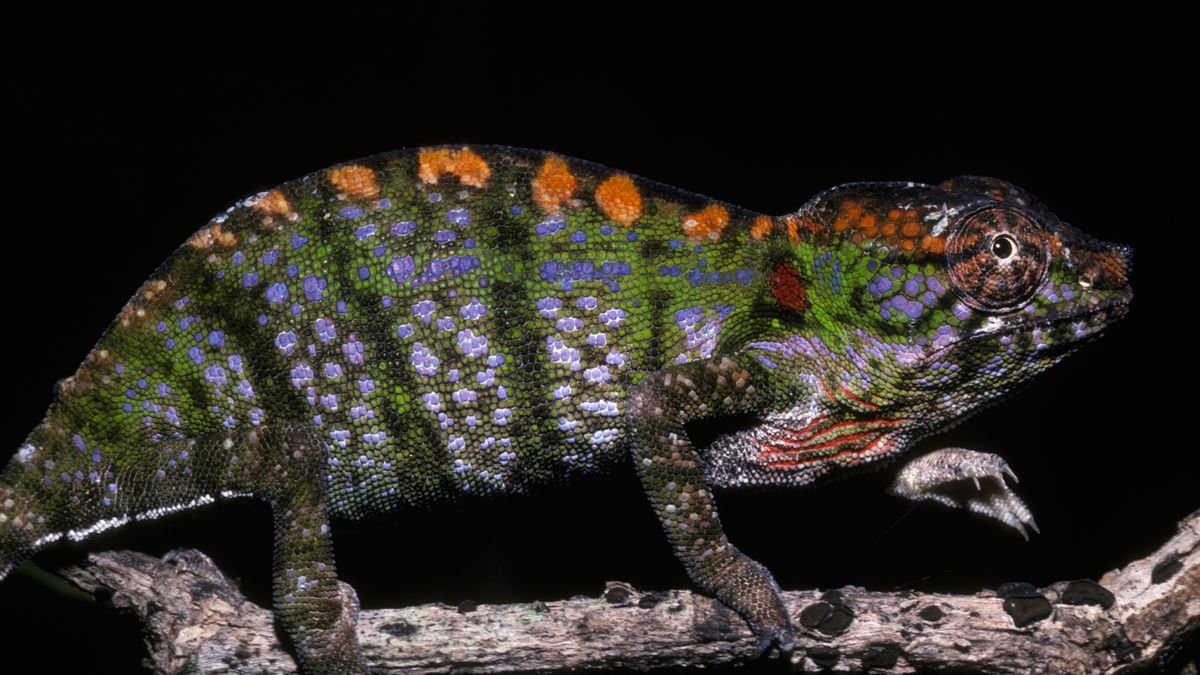
Species Name: Labord’s chameleon (Furcifer labordi)
Habitat: Found exclusively in western Madagascar
Diet: Primarily consumes crickets, flies, locusts, grasshoppers, and stick insects
Remarkable Facts: Labord’s chameleons are known for their exceptionally brief life cycle, holding the record for the shortest lifespan among all tetrapods. Their entire life—from hatching to mating and dying—spans merely four to five months.
Interestingly, these chameleons spend more time developing inside their eggs than outside. The embryos can remain dormant for approximately eight to nine months underground, preparing for their brief, active period above the soil.
These tiny reptiles typically grow up to 3.5 inches (9 centimeters) and inhabit the lowland forests of western Madagascar.
After hatching, they grow rapidly and achieve sexual maturity in just two months.
In January, coinciding with the wet season, the males engage in intense competition for mating rights, shortly followed by their demise.
Subsequently, females dedicate their remaining energy to egg production, laying their eggs in February. To offset their short life span, females can produce up to 11 eggs. Remarkably, females often die mere hours after laying their eggs.
This reproductive strategy means that for the majority of the year, the entire species exists solely in the egg stage, buried underground.
This unique, seemingly precarious life cycle is considered a survival adaptation to Madagascar’s challenging seasonal environment. The region experiences marked wet and dry seasons, where the rainy season provides essential resources like food and water, which become limited during the dry months. While many tropical areas experience similar seasonal patterns, Madagascar’s climate is notably erratic, leading to heightened environmental unpredictability.
To thrive in these conditions, Labord’s chameleons have adapted to a lifecycle that involves remaining as embryos for most of the year, emerging only during the brief rainy season to mate and produce the next generation.
This compressed adult phase not only maximizes their access to food and potential mates but also minimizes competition for resources, as most adults perish before the next generation hatches. However, there are instances during unusually prolonged rainy seasons where some females may live to breed again.
Labord’s chameleons are also renowned for their ability to change color. They do this by manipulating specialized skin cells containing nanocrystals, altering how they reflect light. This chromatic adjustment isn’t primarily for camouflage but is used for communication with other chameleons—such as signaling to potential mates and expressing their emotions.

In a 2024 PBS documentary filmed in Madagascar’s Kirindy Forest, a Labord’s chameleon displayed a stunning array of colors moments before death. Experts explained that this vibrant display is caused by the nervous system continuing to send signals to the skin cells, resulting in a dramatic “technicolor fireworks” effect.









